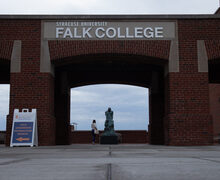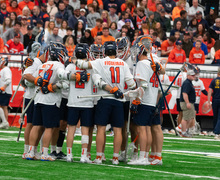Rockler: Media outlets must focus on content accuracy, not speed of news release
Live reporting and social media are capable of reporting news quickly and distributing it widely. At the same time, the ability for inaccurate information to be broadly spread makes it dangerous. The coverage of the Boston Marathon bombings on multiple platforms exhibited this.
In the coverage of the bombing, there was an abundance of inaccurate reporting. We are entering into an age of journalism in which producing digital content takes priority, rather than accuracy.
The coverage by conventional media had problems. The need to fill airtime on television between actual events leads to unnecessary speculation by reporters. Even before the Boston police had suspects, journalists began coming up with possible motives and theories about the bombings.
Rather than just reporting on the facts, anchors were left without new information and airtime to fill. Speculation also revolved around the attackers’ motives, as some thought the bombings were timed to coincide with Tax Day.
Certain reported details turned out to be completely false. Two days before the actual arrest of suspect Dzhokhar Tsarnaev, the Associated Press and others reported that police had a suspect in custody. It caused reporters to needlessly gather outside of a federal court in downtown Boston. Live video of the courthouse only captured police arriving for a bomb scare, not video of a suspect.
News sources across the Boston area, like the Boston Globe, and nationally, like CNN, distributed the AP’s report. Officials denied the reports after they were released. Those who have access to a police scanner could clearly tell that the reports of a suspect being brought down to the courthouse were false.
Eventually, after enough false reports, a news source’s reputation can quickly be lost. Checking sources and verifying information is especially necessary when official sources have not yet been able to confirm facts.
In another instance of inaccurate reporting, WBZ-TV Boston and CNN showed a video of a man who police had lay down on the ground on Mt. Auburn Street in Watertown, Mass. News anchors initially said this could have been one of the bombing suspects. CNN aired a tape of the man entering a police car after being stripped naked for explosives.
He was found to not be at all connected, according to later reports.
The coverage on Twitter of the pursuit was also full of errors and speculation. BuzzFeed reported that one of the suspects was missing Brown University student, Sunil Tripathi. While no news outlets reported this, plenty of users on Twitter saw and distributed a photo of the student. His name was a trending topic for several hours.
Tripathi’s sister, Sangeeta Tripathi, told Reuters, “Someone will tweet, then retweet, and completely unsubstantiated things can proliferate so rapidly and destructively. Those night hours were horrible.” The craving exhibited by the public to find the name and face of the attacker led news consumers to implicate the wrong person.
Misinformation also caused some to act preemptively. The Czech ambassador to the United States issued a press release to clarify that the Czech Republic and Chechnya, the area of Russia where the two bombing suspects are from, are two different locations.
There are several lessons we can take from the media’s handling of the Boston bombings and suspect pursuit. A source’s reputation is on the line whenever news is reported. Therefore, verifying information before releasing it is a necessity. Exposing information at a slower rate, and therefore ensuring credibility, is more beneficial.
Social media has put too much pressure on all kinds of news sources to deliver news quickly. Slowing down and getting everything right will best inform the public. For news consumers: Inspect what you read and have a skeptical eye.
Harmen Rockler is a senior newspaper and online journalism and political science major. His column appears weekly. He can be reached at [email protected] or followed on Twitter at @LeftofBoston.
Published on April 23, 2013 at 1:04 am




